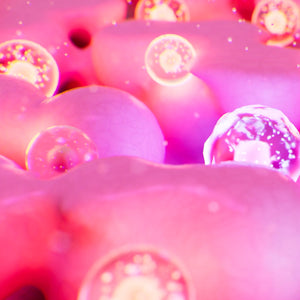Ovulation is a part of your menstrual cycle when the egg is released from the ovary. It signals the beginning of your fertile period. Ovulation typically lasts one day and occurs in the middle of a woman's menstrual cycle.
Once the egg is released it is only viable for about 24 hours, after that your fertile window is over. This makes it very important to be able to identify this best time to conceive.
The ovaries are two small, oval-shaped organs in the pelvis, the area between the hips in the lower part of the tummy. The ovaries produce and release eggs at the mid-point of each menstrual cycle.
Inside the ovary are thousands of follicles: small sacs filled with fluid with an immature egg in the center. Your menstrual cycle begins on the first day of menstrual bleeding.
During the first week of cycle several follicles begin to grow at the same time. At the end of the first week the follicles stop growing and begin to disintegrate except for one. This main follicle continues to grow and nourish the developing egg inside it.
Few days before the mid-point of the menstrual cycle, the remaining follicle secretes a large amount of estrogen into the blood stream. When the estrogen reaches the pituitary gland in the brain, the gland releases high levels of luteinizing hormone into the blood stream. This luteinizing hormone surge is what triggers ovulation 24-48 hours later.
Luteinizing hormone surge causes the ovarian follicle to undergo a sudden growth. The enlarged follicle releases chemicals, causing one of the two fallopian tubes that connect ovaries to the uterus, to move in closer and surround the follicle. The follicle swells until it bursts open, ejecting the egg. In response, finger-like structures called fimbriae sweep the egg into the neighboring fallopian tube. Inside the walls of the fallopian tube, muscular contractions push the egg toward the uterus. Here in the fallopian tube, the egg may be fertilized by a sperm. After ovulation, the egg lives for 12-24 hours, so it must be fertilized by a sperm during this time for a woman to become pregnant.
If the egg is fertilized, the egg and sperm unite to form a one-celled entity called a zygote. As the zygote travels down the fallopian tube toward the uterus, it begins dividing rapidly to form a cluster of cells called a blastocyst, which resembles a tiny raspberry. When the blastocyst reaches the uterus, it implants in the lining of the uterus and pregnancy begins.
If the egg is not fertilized, it dissolves away and is shed along with the uterine lining through the vagina about two weeks later.
Related blog articles:
Pregmate App - Ovulation Tracker, Fertility and Period Calculator ![]()
Conception explained. Fertilization and Implantation. ![]()
Using ovulation tests to identify the most fertile days of the month ![]()
What day should I start testing for ovulation?
When to collect urine for ovulation test?
When to begin testing for ovulation?
Reading ovulation test results
How often should you test for ovulation?
Can any medication or medical condition affect ovulation test results?
Ovulation test result examples
Reading ovulation test strips results
What causes PCOS? Symptoms and signs. ![]()
Can I use urine ovulation dipstick tests with PCOS?


1 comment
Minecraft’s enchantment system allows players to enhance their gear with various magical abilities. https://mcbilgi.online/